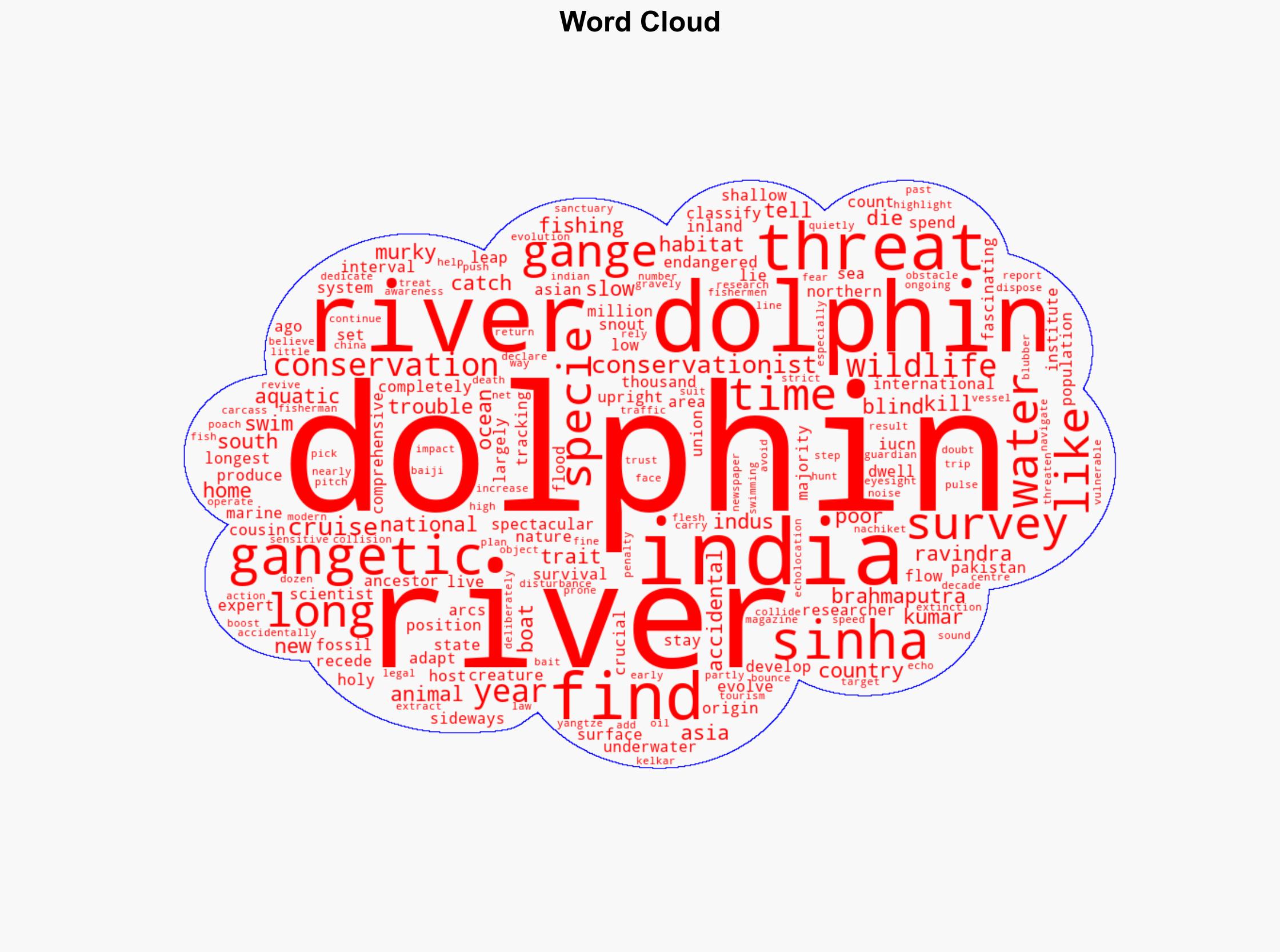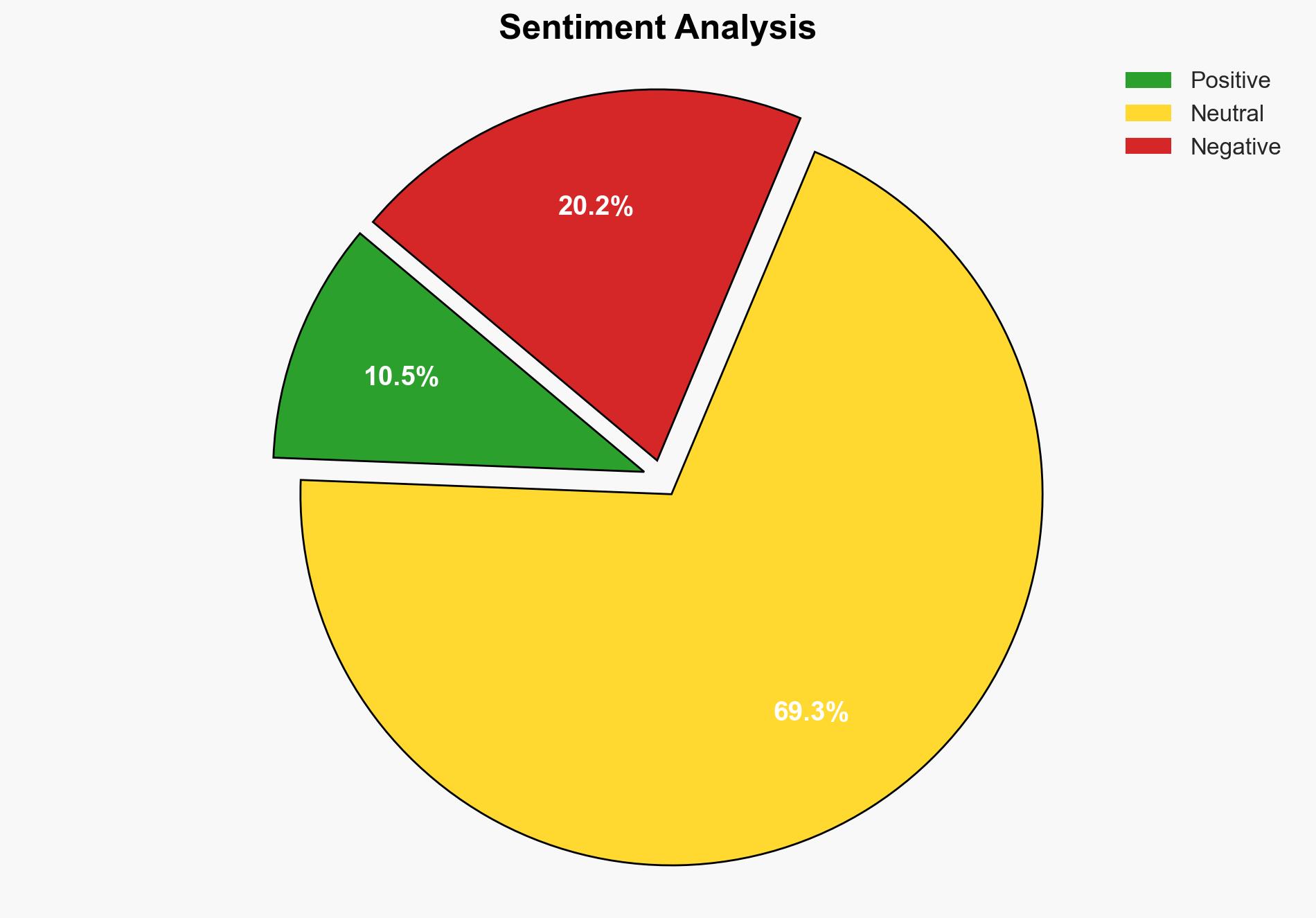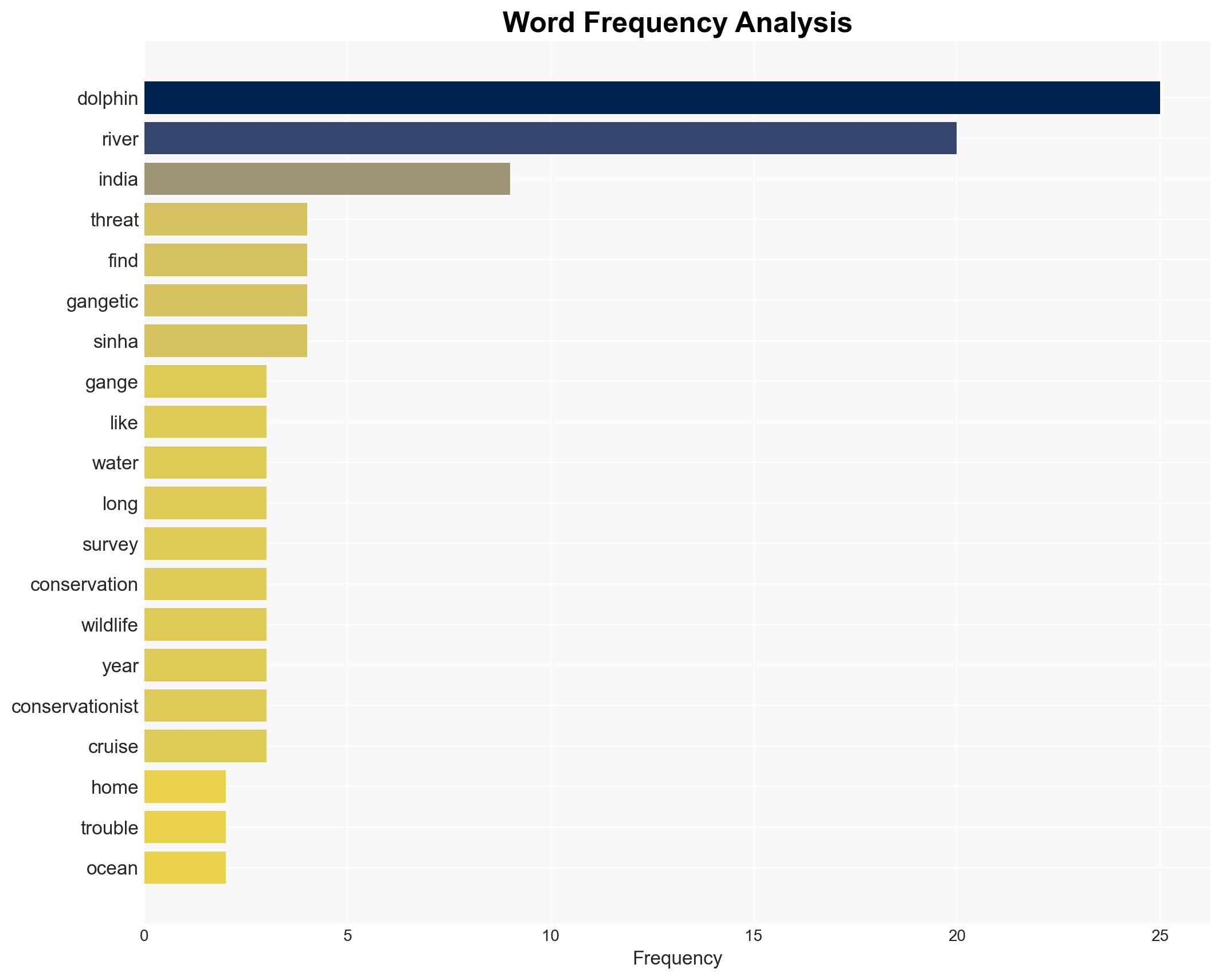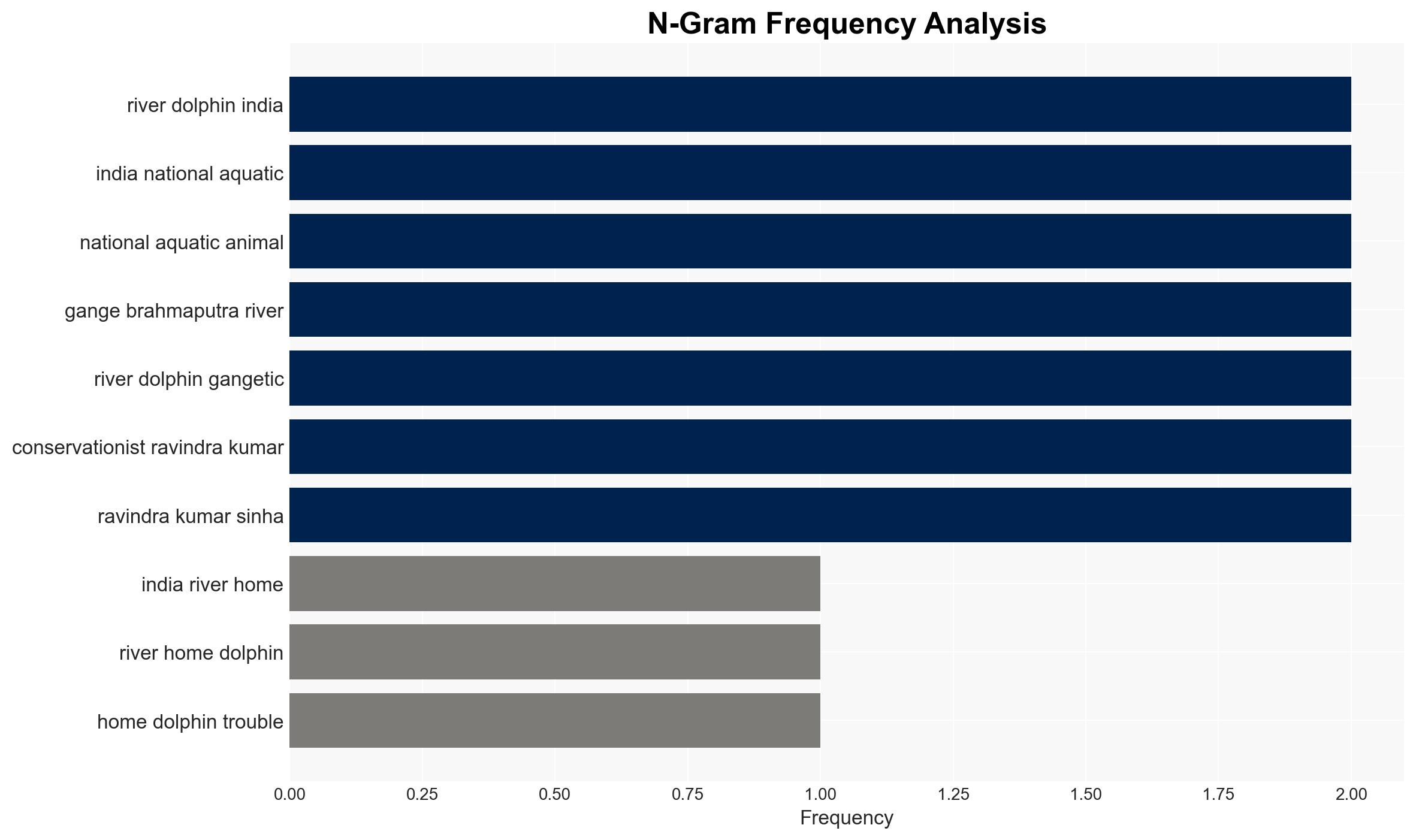India’s rivers are home to 6000 dolphins – but they are in trouble – BBC News
Published on: 2025-04-06
Intelligence Report: India’s rivers are home to 6000 dolphins – but they are in trouble – BBC News
1. BLUF (Bottom Line Up Front)
India’s river dolphins, primarily found in the Ganges and Brahmaputra river systems, face significant threats from human activities and environmental changes. Despite being classified as endangered, these dolphins are at risk due to accidental capture in fishing nets, deliberate poaching, and habitat disturbances from increasing river traffic. Conservation efforts are crucial to prevent their extinction, drawing parallels to the fate of the baiji dolphin in China’s Yangtze River.
2. Detailed Analysis
The following structured analytic techniques have been applied for this analysis:
General Analysis
The Gangetic and Indus dolphins, classified as endangered by the International Union for Conservation of Nature (IUCN), are primarily found in the river systems of northern India. A recent survey highlights the precarious situation of these dolphins, emphasizing the need for comprehensive conservation strategies. The dolphins’ unique adaptations, such as echolocation and poor eyesight, make them vulnerable to modern threats, including collisions with boats and habitat disruption from tourism and increased vessel traffic.
3. Implications and Strategic Risks
The decline of river dolphin populations poses risks to biodiversity and ecological balance in India’s river systems. The potential extinction of these species could mirror the loss of the baiji dolphin in China, indicating a broader environmental crisis. Additionally, the economic implications of declining tourism and fishing industries, due to stricter regulations and penalties, could impact regional stability and livelihoods.
4. Recommendations and Outlook
Recommendations:
- Implement stricter enforcement of wildlife protection laws to prevent poaching and accidental dolphin deaths.
- Develop and promote sustainable tourism practices that minimize habitat disturbances.
- Invest in research and conservation programs to monitor dolphin populations and their habitats.
- Enhance community awareness and involvement in conservation efforts to ensure local support and compliance.
Outlook:
Best-case scenario: Effective conservation measures lead to a stable or increasing dolphin population, with improved habitat conditions and reduced human-induced threats.
Worst-case scenario: Continued decline in dolphin populations due to insufficient conservation efforts, leading to potential extinction and significant ecological and economic impacts.
Most likely scenario: Gradual improvement in conservation outcomes with increased government and community involvement, but challenges persist due to ongoing threats and limited resources.
5. Key Individuals and Entities
The report mentions significant individuals such as Ravindra Kumar Sinha and Nachiket Kelkar, who have highlighted the threats facing river dolphins and the need for enhanced conservation efforts. Their insights underscore the importance of strategic actions to safeguard these endangered species.





